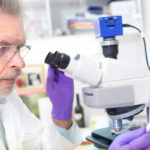Including salt in your diet, for the average person, is just fine. We need sodium to be able to function properly. Moderation is key. Too much or too little can have negative effects.
What is salt’s role in our health?
Salt helps to maintain the electrical charge in cells It also distributes fluids. The nervous system requires it to function. Dietary salt also helps promote proper muscle function and movement. In the intestines, sodium helps the body absorb chloride, amino acids,
It can also promote proper muscle function and movement.
On average you only need to replace about 2,000 milligrams of sodium each day.
The American Heart Association reports the average American takes in around 3,436 milligrams per day – far more than needed, which can lead to issues over time.
Too Much Salt:
- Possibility of raised blood pressure
- Brain tells you that your thirsty because of the increased salt in the body.
- Kidneys try to rid the body of excess salt through urine.
- Elevated blood pressure from too much salt can lead to an enlarged heart.
- Extra pressure on the heart because of the presence of excess water in the blood.
- Water retention and bloating.
Too Little Sodium
- Nausea, vomiting, upset stomach.
- Loss of proper muscle control.
- Muscle weakness.
- Disorientation, seizures, brain damage.
- Headache.
- Cerebral edema (brain swelling).
Track your daily sodium by following serving information on food labels which also list the amount of sodium per serving.
If you’re experiencing any symptoms consult a doctor to determine what the cause could be. Dr. Kordonowy of Internal Medicine, Lipid, & Wellness in Fort Myers can give you a dietary assessment and determine what amount of dietary salt you should be ingesting. To book an appointment with Dr. Kordonowy, click here or call 239-362-3006, ext. 200. Or to find a doctor in your area visit www.ipalc.org/find.


